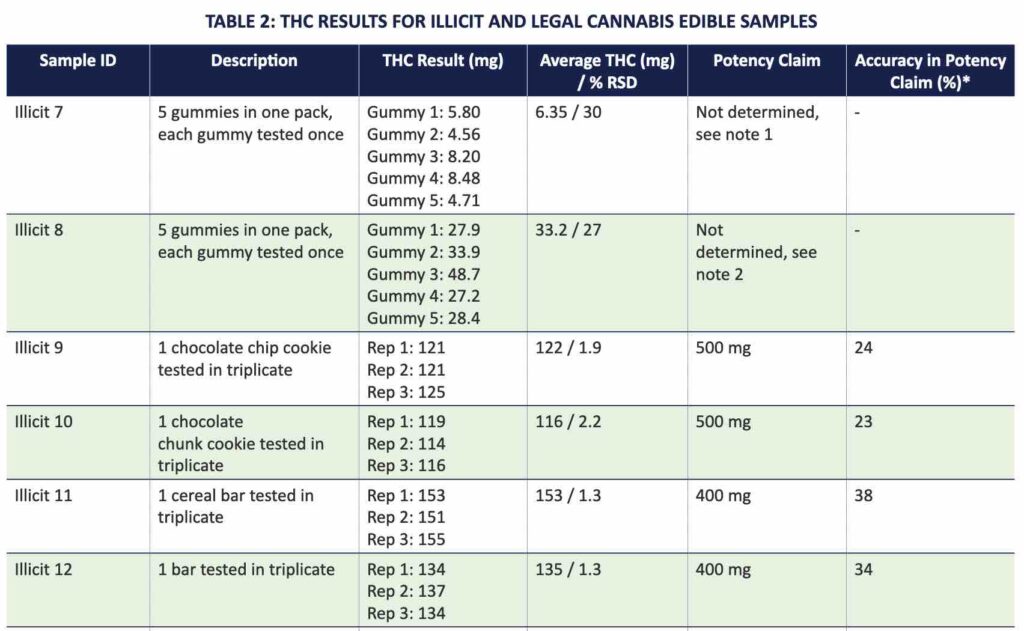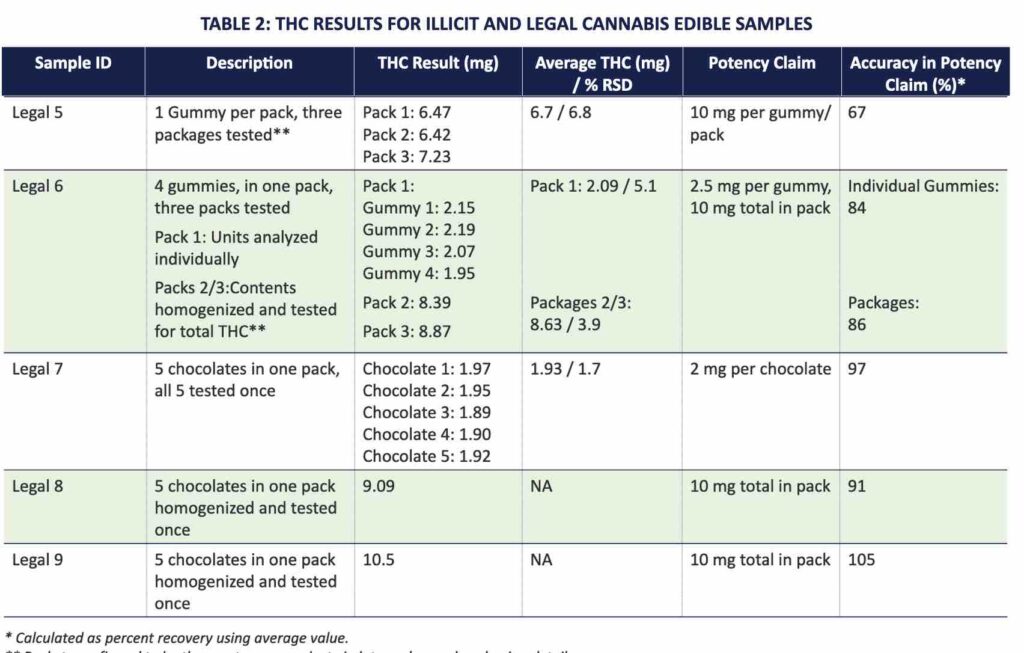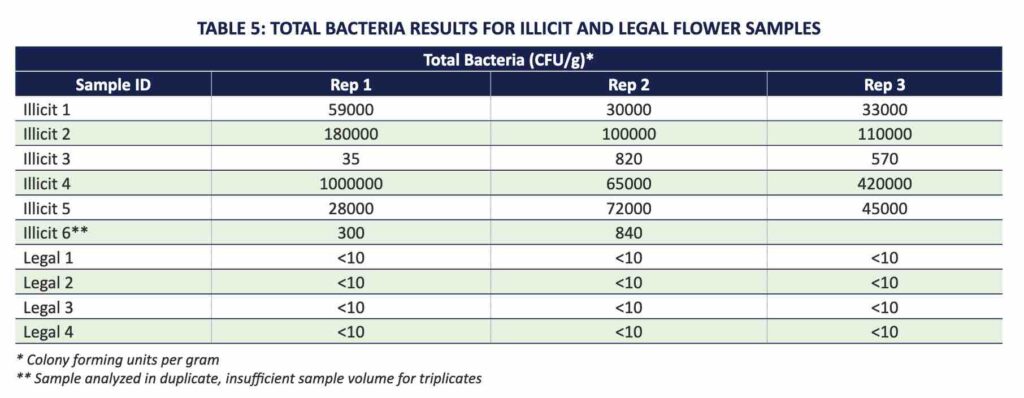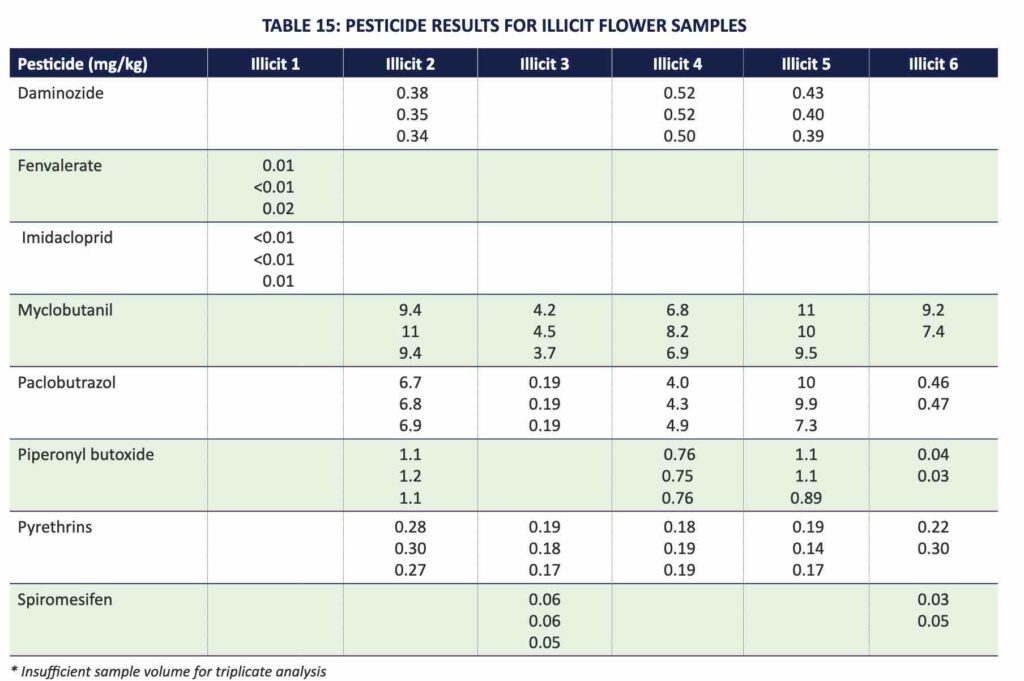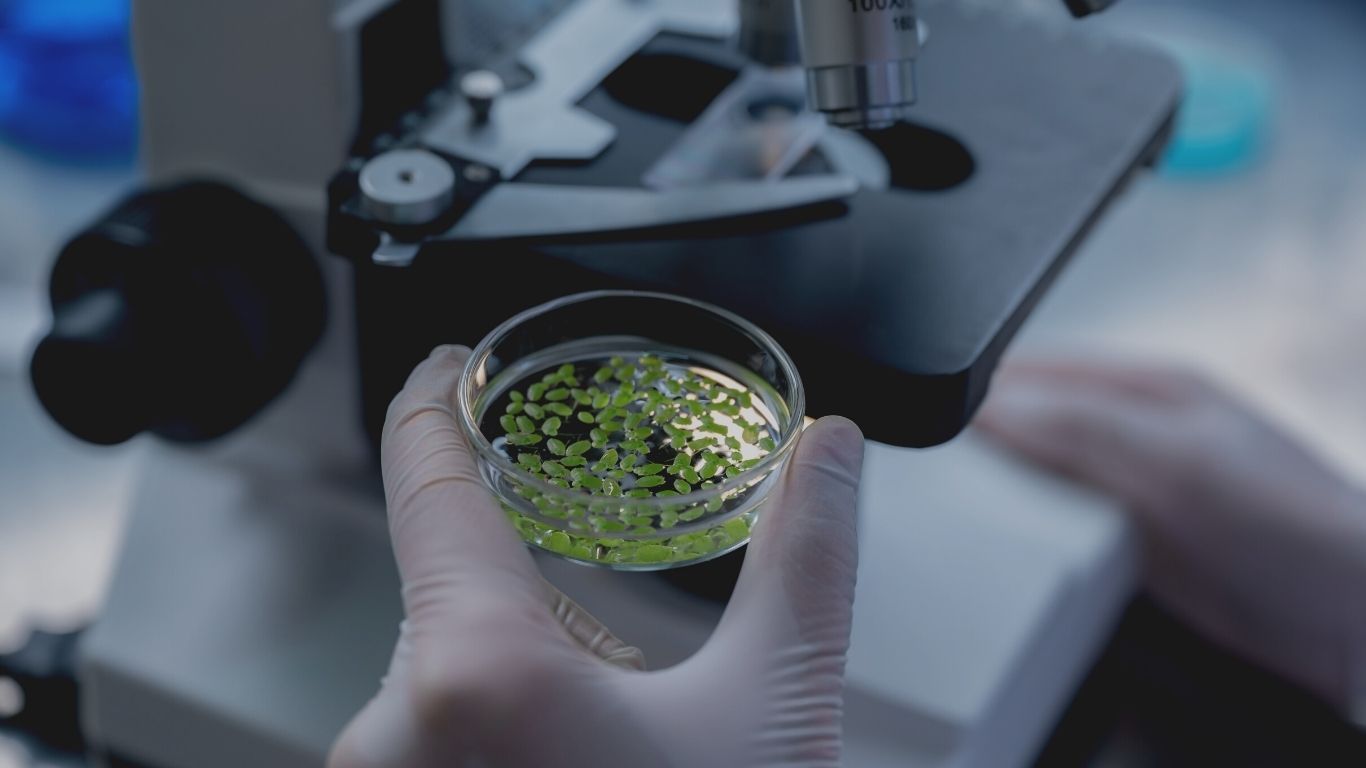
A recent report from the New Brunswick Research and Productivity Council compares testing results between legal and illegal cannabis products.
The report, released in late September, looked at samples of several cannabis products obtained from the licit and illicit markets in New Brunswick, both dried flower as well as various edibles, and tested them for things like THC levels, moulds, heavy metals and pesticides.
Seven illicit flower samples and six illicit edibles samples were obtained from several unlicensed New Brunswick storefronts, along with four legal flower types and five legal edible types from Cannabis NB.
The results show the majority of illicit flower and edibles had THC levels far below advertised amounts, as well as higher than acceptable limits for several microbiological contaminants and pesticides. While all legal products passed testing for THC, microbiological contaminants, and pesticides, most THC levels were slightly under the advertised amounts, and one was low enough to be outside of acceptable deviation limits, likely due to age of product.
Six (two samples were combined as one) of the illicit flower samples and most illicit edibles samples showed THC levels far below advertised amounts. None of the illicit flower samples would have passed the strict rules around microbiological contaminants such as moulds and bacteria, while all legal samples were below the allowable threshold.
All six samples of illicit flower showed the presence of several unapproved pesticides that would not be allowed in the legal market either, such as Daminozide, Fenvalerate, Imidacloprid, Myclobutanil, Paclobutrazol, Piperonyl butoxide, Pyrethrins, and Spiromesifen.
The six illicit dried flower samples tested all claimed to have THC at or above 30%. The highest actual THC was 22%, three were 13%, one 17%, one 18%.
Of the four legal examples, they were all listed as 17% THC (and under 1% CBD). One was actually 17%, two were 16%, one was 15%. These were all within the allowable range of deviation.
Of the six illicit gummies tested, all were well under the advertised potency. Two different chocolate chip cookies listed as 500mg THC but were actually 121mg THC and 116mg THC. A 400mg THC “cereal bar” was actually 153mg THC. Another 400mg THC “bar” was actually 135mg THC.
Two other illicit edibles couldn’t have their listed potency properly factored as the labeling was inconclusive. One package of gummies listed 68 mg THC per serving and 68 pieces per pack, but only five pieces were actually in the pack. The actual THC in those gummies varied from about 4.5mg to almost 8.5mg.
A second package of illicit gummies had labelling that said there was “about 1 serving per container, serving size 10 pieces, 500mg THC” but there were only five gummies in the pack. Those five gummies also had a wide range of actual potencies, from 27.9mg THC to 48.7mg THC.
On the legal side, one gummy listed as 10mg was actually 6.7mg THC. A four-pack of legal gummies listed as 2.5mg THC each came in two different tests with one showing just over 2mg THC and the other showing over 8mg THC. Legal chocolates listed as 2mg each came in at 1.93mg THC. Two other legal chocolates tested, both of which were listed as 10mg THC, had one that was actually 10.5mg THC and one that was 9mg THC.
Within the legal market cannabis, products are allowed a small variability in terms of cannabinoids like THC. For edibles, a claimed potency between 2mg and 5mg of THC must be within 80% – 120% of the claimed amount. For products containing more than 5 mg of THC, the label must be within 85% – 115% of the claimed amount. None of the illicit edibles were within this acceptable threshold, while all but one legal edibles was within this range.
The report notes that the one legal edible that was well below the advertised potency (listed as 10mg THC but was actually 6.7mg THC) had a packaging date of more than a year old. It also notes that the significantly lower THC levels in the illicit edibles could be due to older product as well, but no such packaging dates were present to know.
The report also points out that illicit products didn’t comply with child proof packaging and warning requirements.
Most illicit and all licit edibles passed microbial testing for bacteria, yeasts, and moulds. Two illicit edibles showed bacteria levels several times higher than acceptable limits as did one sample for yeasts. One illicit edibles sample was just above acceptable limits for moulds.
Analyses of cadmium, arsenic and lead were also conducted for all sampled dried flower. There was no detection of arsenic or mercury, but there was cadmium and lead detected in flower samples. Illicit sources had higher levels of cadmium than licit sources, and both had negligible amounts of lead, but all tested well below acceptable limits.
The report notes that these results show that legal products are safer and more accurate for consumers than illicit products and cautions consumers to shop accordingly.
A recent report out of BC earlier this year showing testing results for dried flower products seized from illicit retailers also had much lower than advertised THC levels as well as pesticides and moulds. A similar report is expected from the OPP in Ontario at a future date, as well.



